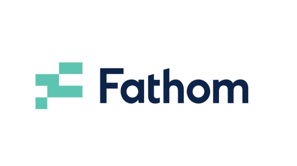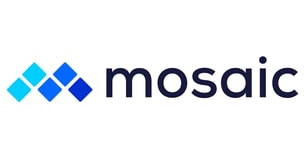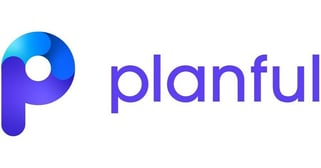Why Jirav?
When it comes to FP&A software, Jirav stands out with its cloud-based business planning capabilities, designed to aid financial teams in creating accurate forecasts, gaining sales insights, and reporting on financials for driving growth.
Key features that make Jirav a preferred choice include:
- Dashboard-based UI: Jirav offers a customizable dashboard, enabling users to visualize both financial and non-financial metrics effectively.
- Integrated cash flow forecasting: It allows for extended forecasting, providing insights for up to 60 months into the future, which is essential for long-term planning.
- Report packages: With automation capabilities, Jirav eliminates the need for manual spreadsheet work, making investor packages and key reports more efficient.
- Driver-based modeling: This feature aids in creating and managing operating plans and budgets swiftly, enhancing productivity.
Plus, Jirav's extensive integration capabilities with popular platforms like Quickbooks, NetSuite, Sage Intacct, ADP, Paychex, Salesforce, and HubSpot, make it a versatile tool for diverse business needs. The pricing structure of Jirav is tiered—Starter, Pro, and Enterprise—catering to a wide range of company sizes and complexities, starting at $10,000/year for the Starter tier.
Jirav is particularly beneficial for small businesses at the onset of their financial planning journey, offering scalability as the business grows. It stands out for its niche in serving pure accounting firms, setting it apart from many other FP&A tools in the market.
Despite its robust features, Jirav presents certain limitations that might lead users to seek alternatives, such as:
- Slow processing speeds: Some users may experience delays, which can be a significant hindrance in fast-paced business environments.
- Steeper learning curve: The complexity of features might require a longer time for new users to get accustomed to the software.
- Limited variety of data visualizations: For businesses that rely heavily on diverse and intricate data visualizations, Jirav's offerings might seem insufficient.

Top Jirav alternatives
Jirav is a powerful tool for financial planning and analysis, especially for small to medium-sized businesses and accounting firms. However, for companies facing issues with processing speed, requiring more advanced data visualization, or seeking a simpler user interface, exploring alternative software solutions might be a smart decision.
Here are some of the top Jirav alternatives to consider for your business:
1. Cube
.png?width=366&height=106&name=blue-cube-logo%20(1).png)
Cube is a modern FP&A software that stands out for its integration with traditional spreadsheet tools like Excel and Google Sheets, offering a blend of familiarity and enhanced functionality. It is designed for finance teams looking for an upgrade from spreadsheets without a complete overhaul of their existing systems.
Key features:
- Spreadsheet-native interface: Cube is compatible and bi-directional with any spreadsheet, including Excel and Google Sheets.
- Cloud infrastructure: Access your data from anywhere and work where you want. Easily collaborate with stakeholders, build reports and dashboards with greater flexibility, and keep everyone on the same page.
- Detailed audit trail: Access an audit trail in the Cube platform and directly from your spreadsheet so you can keep your data clean and governed to your rules.
- Model agnostic: Avoid using detailed, difficult formulas to pull your data. Use your own models and store formulas in the cloud for lightning-fast processing.
- Single source of truth for data: Connect multiple systems to one source of record.
- Dashboard creator: See and explore your data your way. Easily access, filter, and visualize data to make better decisions, faster.
- Report builder: Share static reports like budgets and headcount directly from Cube to keep everyone aligned.
Pros:
- Speedy implementation
- Simplifies data consolidation
- Supports collaborative planning
Cons:
- Cube is not a solution for learning FP&A for the first time
Cube is ideal for small to medium-sized businesses transitioning from traditional spreadsheets to more structured FP&A systems, and those who prefer to retain the spreadsheet format for financial planning.
2. Fathom

Fathom is primarily known for its excellence in financial analysis and reporting. This tool is designed for businesses that need deep insights into their financial data, presented in an easily digestible format with customizable dashboards.
Key features:
- Advanced financial reporting and analysis tools
- Customizable dashboards and visual data representation
- KPI tracking and performance analysis
Pros:
- Exceptional for creating detailed reports
- User-friendly interface
- Excellent for visualizing financial data
Cons:
- May lack depth in forecasting and budgeting features.
Fathom is best suited for medium to large organizations that require robust reporting and analytics capabilities, particularly those needing to regularly present financial data to stakeholders.
3. Mosaic

Mosaic is a strategic finance platform that combines analytics, planning, and reporting to deliver a comprehensive FP&A solution. It's aimed at companies looking for a holistic approach to financial planning and analysis, with an emphasis on strategic decision-making.
Key features:
- Integrated planning, financial reporting, and analytics
- Real-time financial insights and scenario modeling
- Collaborative workflows and strategic planning tools
Pros:
- Offers a 360-degree view of financial operations
- Supports strategic planning with scenario modeling
- Fosters team collaboration
Cons:
- Can be overwhelming for smaller businesses or those with simpler financial planning needs.
Mosaic is particularly effective for mid-sized to larger organizations with complex financial structures and a need for comprehensive strategic planning and analysis.
4. Vena

Vena Solutions is a comprehensive FP&A software that combines advanced financial planning capabilities with a user-friendly interface. It's tailored for businesses looking for robust budgeting, forecasting, and financial reporting features in a single platform.
Key features:
- Detailed budgeting and forecasting tools
- Custom report generation with in-depth analytics
- Data integration from various sources for a unified view
Pros:
- Robust and comprehensive feature set
- Strong data integration capabilities
- Excellent for complex financial planning needs
Cons:
- May have a steeper learning curve for new users
- Mac compatibility is limited, meaning these users have a lesser experience than PC users
- Doesn’t integrate with Google Sheets
While an enterprise company can use Vena, it's best for SMBs and the mid-market.
5. Causal

Causal is a modern FP&A tool known for its simplicity and effectiveness in financial modeling and scenario analysis. It’s designed for teams that need a straightforward, yet powerful tool for financial forecasting and analysis.
Key features:
- Intuitive financial modeling and scenario analysis
- Visual and interactive reports
- Easy collaboration and sharing of financial models
Pros:
- User-friendly interface
- Effective for complex financial modeling
- Great for collaborative teams
Cons:
- Limited in terms of financial and operational data integration with other systems
Causal is best suited for startups and small to medium-sized businesses that prioritize ease of use and effective financial modeling without the need for extensive integrations.
6. Planful

Planful is a cloud-based FP&A platform known for its speed and efficiency in financial planning and close processes. This enterprise performance management software caters to dynamic businesses seeking to streamline and accelerate their financial operations.
The software delivers insights at scale, automating labor-intensive work and aligning planning processes to help businesses pull in operational data and improve their reporting.
Key features:
- Fast financial close and consolidation processes
- Dynamic planning with what-if scenarios
- Automated financial reporting and analysis
Pros:
- Gives users control of how they administer and manage financial processes
- Emphasizes trust and security
- Provides transparent reporting
Cons:
- Collaboration can be complex, as the individual models are fragile and must be updated online
- Provides limited spreadsheet integrations
- Users must rely on consultants to build and maintain models
Planful is an excellent choice for mid to large enterprises that need to expedite their financial close processes and desire a tool that supports dynamic planning.
How to choose the right FP&A software for your business
Selecting the right FP&A software is crucial for efficient and effective financial management within an organization. Here are key criteria and best practices to consider when choosing FP&A software:
- Integration capabilities: Ensure the software can seamlessly integrate with your existing systems (e.g., ERP, CRM, HR systems). Look for the ability to import and export data easily to and from the software.
- Scalability: Choose a tool that can grow with your business. Consider whether the software can handle increased data volume and additional users as your company expands.
- User-friendliness: Prioritize software with an intuitive interface. It should be easy for your team to learn and use, reducing the need for extensive training.
- Customization and flexibility: The software should offer customization options to tailor it to your specific business needs and processes. Flexibility in reporting, budgeting, and forecasting is essential to adapt to changing business environments.
- Advanced reporting and analytics: Strong reporting capabilities are vital. Look for software that offers comprehensive and customizable reporting features. Analytical tools should provide deep insights and aid in data-driven decision-making.
- Real-time data and forecasting: The ability to access real-time data helps in making timely decisions. Robust forecasting features are crucial for effective planning and anticipating future trends.
- Security and compliance: Ensure the software adheres to industry standards for data security and privacy. Check for compliance with relevant financial regulations and standards.
- Collaboration features: Collaboration tools are important for team-based planning and decision-making. Look for features that allow multiple users to work together efficiently.
- Cost-effectiveness: Consider the total cost of ownership, including licensing, implementation, training, and maintenance. Evaluate the return on investment (ROI) based on the software's features and benefits.
- Vendor support and community: Assess the level of support provided by the vendor, including customer service, training resources, and user communities. A strong user community can be a valuable resource for best practices and troubleshooting.
- Trial periods and demos: Take advantage of trial periods or demos to test the software’s capabilities and fit with your organization’s needs.
By carefully considering these criteria, organizations can select an FP&A software that not only meets their current needs but also supports their growth and adapts to future challenges.
Conclusion: is Jirav right for you?
Finding the right FP&A software is about aligning with your organization's unique needs. Armed with insights on alternatives to Jirav and the essential criteria for selection, you're now equipped to make a choice that drives efficient financial planning and propels your business forward.
Want to learn why Cube may be right for your business? Request a free demo today.



.png)









.png)

.png)

.png?width=366&height=106&name=blue-cube-logo%20(1).png)






.png)
.png)
-1.png)